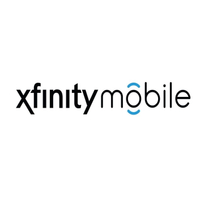You may not know them by this name, but most mobile carriers in the U.S. fall under this category, and they offer some excellent cell plans that you should check out if you’re in the market for a new phone. So what are MVNOs, and are they any good? To answer the first question, MVNOs are carriers that don’t have their own wireless network; instead, they piggyback off another carrier’s platform for coverage through their cell phone plans. That translates to benefits for you such as lower costs, though you might experience slower traffic when parent networks prioritize their own customers over MVNO subscribers. With dozens of options under the mantle of MVNO and some of the most popular carriers like Mint Mobile (opens in new tab) fitting into this category, what exactly are you getting for your monthly fees? In this guide we’ve broken down what an MVNO is, whether they’re worth your investment and which of the three main carriers they use to get their connections and speeds.
What is an MVNO?
As noted above, a mobile virtual network operator is a carrier that does not have its own wireless network. Instead, it borrows the signal, coverage and network of a larger carrier. There are three main carriers that run their own network — Verizon (opens in new tab), AT&T (opens in new tab) and T-Mobile (opens in new tab). Sprint used to be the home for a large number of MVNOs, but after merging with T-Mobile, its towers are going away, forcing MVNOs to find a new home. Almost every MVNO runs their network off of these three options, though some turn to US Cellular and its network of regional cell towers. Some MVNOs will use multiple networks for their signal with a lot of them relying on a combination. For example, Straight Talk uses Sprint, T-Mobile, Verizon and AT&T. In these cases, you’ll likely be signed up to the network with the best speeds where you live. In the case of Google Fi, Google’s wireless service, the services uses a combination of networks run by US Cellular and T-Mobile (and what’s left of Sprint). If you buy an optimized phone from the carrier — typically one of Google’s Pixel devices — you can seamlessly switch between networks for the best connection. While MVNOs receive the same speeds, connections and overall benefits, they don’t always get the same priority on their parent networks. For example, T-Mobile customers will always be prioritized at peak times but with Mint Mobile, an MVNO that uses T-Mobile’s network, customers can see their speeds slowed at peak times. However, this lack of their own network means they can offer better cheap cell phone plans, bringing the costs down significantly.
T-Mobile and Sprint MVNOs
T-Mobile has the largest collection of MVNOs… technically. This is because T-Mobile merged with Sprint in 2020, another big carrier, to form one company. Like T-Mobile, Sprint had a number of MVNOs including the popular Boost Mobile (opens in new tab). Boost, now spun off to Dish, has migrated to T-Mobile’s network, with plans to eventually launch its own nationwide coverage. (Boost is also in the process of moving coverage over to AT&T’s network.) The T-Mobile MVNO that will stand out most is Mint Mobile. It is one of the cheapest carriers around and has a wide variety of flexible prepaid plans. However, T-Mobile actually has quite a few MVNOs, these include:
Mint MobileConsumer CellularMetro by T-MobileGoogle FiSimply MobileUltra MobileTello (Sprint)Boost MobileUnreal Mobile (Sprint)TextNow
Verizon MVNOs
Verizon is currently the second largest wireless carrier, and for speeds and coverage — easily a top choice for many. It has a wide range of MVNOs but some of the most popular include Xfinity Mobile and Twigby. Verizon as a carrier can become expensive very quickly, so an MVNO is a great way to get its speeds and coverage, without the blinding costs that usually come with it. The popular carrier Visible is also part of the Verizon family but not technically an MVNO (more on that below). Verizon’s key MVNOs include:
Xfinity MobileTwigbyTingSpectrum MobilePage PlusPix WirelessCredo MobileLivelyNet10Reach MobileRed PocketStraight TalkTotal WirelessTracFone
AT&T MVNOs
Not only the largest carrier in the US, AT&T is the biggest telecommunications business in the world. And yet, it has a surprisingly limited supply of MVNOs. The key ones are Consumer Cellular and Cricket, but you’ll find a few other options using AT&T’s network. AT&T also provides the network for FreedomPop which specializes in international calls.
Consumer CellularCricketFreedomPopFreeUP MobileGood2Go MobileH20 WirelessNet10Red PocketStraight TalkTracFone
What are the pros and cons of MVNOs?
Overall, there are very few differences between an MVNO and one of the main best phone carriers. As these smaller networks are using their networks, they are getting the same speeds, coverage, and connections of the main providers. However, the main issue is around a lack of prioritization. What this means is that in times of peak traffic, MVNOs will often have their data speeds slowed down as the main network operator (like T-Mobile) prioritizes its own customer’s data speeds. While this is rare, it can be frustrating when it does happen. On top of that, MVNOs are often more limited in the plans and phones they can offer. Unlike the variety of plans and phones on offer at AT&T, Verizon, and T-Mobile, most MVNOs will offer just a few cell phone plans and the main handsets. On the flip side, MVNO customers do benefit from cheaper monthly bills. Because MVNOs don’t have to run their own network, they can charge you a lot less for your wireless service. The likes of Tello and Mint Mobile have some incredibly affordable plans compared to their parent companies. On top of this, MVNOs often have to come up with additional benefits and promotions to stand out in a crowded market. This can mean hotspot data, pricing promotions or even free gifts.
Which carrier offers the best MVNOs?
There is no clear-cut answer here, as the answer depends on what you’re looking for. All of the main carriers — Verizon, T-Mobile and AT&T — have excellent set-ups and therefore, you can’t go wrong with an MVNO on any of them. What it will really come down to is the kind of plan you’re looking for and which carrier has the best service in your area. On the pricing front, Mint Mobile and Ting feature great cheap plans despite using the networks of different carriers. Xfinity use Verizon’s network, but they offer some of the best family cell phone plans. While going for an MVNO that uses Verizon will offer top-of-the-line speeds, or a carrier using T-Mobile will reward you with excellent coverage, it’s best to focus on the features of the MVNO itself instead of its parent company.





title: “Mvnos What Are They And What Are The Best Options " ShowToc: true date: “2022-11-09” author: “Steve Coe”
You may not know them by this name, but most mobile carriers in the U.S. fall under this category, and they offer some excellent cell plans that you should check out if you’re in the market for a new phone. So what are MVNOs, and are they any good? To answer the first question, MVNOs are carriers that don’t have their own wireless network; instead, they piggyback off another carrier’s platform for coverage through their cell phone plans. That translates to benefits for you such as lower costs, though you might experience slower traffic when parent networks prioritize their own customers over MVNO subscribers. With dozens of options under the mantle of MVNO and some of the most popular carriers like Mint Mobile (opens in new tab) fitting into this category, what exactly are you getting for your monthly fees? In this guide we’ve broken down what an MVNO is, whether they’re worth your investment and which of the three main carriers they use to get their connections and speeds.
What is an MVNO?
As noted above, a mobile virtual network operator is a carrier that does not have its own wireless network. Instead, it borrows the signal, coverage and network of a larger carrier. There are three main carriers that run their own network — Verizon (opens in new tab), AT&T (opens in new tab) and T-Mobile (opens in new tab). Sprint used to be the home for a large number of MVNOs, but after merging with T-Mobile, its towers are going away, forcing MVNOs to find a new home. Almost every MVNO runs their network off of these three options, though some turn to US Cellular and its network of regional cell towers. Some MVNOs will use multiple networks for their signal with a lot of them relying on a combination. For example, Straight Talk uses Sprint, T-Mobile, Verizon and AT&T. In these cases, you’ll likely be signed up to the network with the best speeds where you live. In the case of Google Fi, Google’s wireless service, the services uses a combination of networks run by US Cellular and T-Mobile (and what’s left of Sprint). If you buy an optimized phone from the carrier — typically one of Google’s Pixel devices — you can seamlessly switch between networks for the best connection. While MVNOs receive the same speeds, connections and overall benefits, they don’t always get the same priority on their parent networks. For example, T-Mobile customers will always be prioritized at peak times but with Mint Mobile, an MVNO that uses T-Mobile’s network, customers can see their speeds slowed at peak times. However, this lack of their own network means they can offer better cheap cell phone plans, bringing the costs down significantly.
T-Mobile and Sprint MVNOs
T-Mobile has the largest collection of MVNOs… technically. This is because T-Mobile merged with Sprint in 2020, another big carrier, to form one company. Like T-Mobile, Sprint had a number of MVNOs including the popular Boost Mobile (opens in new tab). Boost, now spun off to Dish, has migrated to T-Mobile’s network, with plans to eventually launch its own nationwide coverage. (Boost is also in the process of moving coverage over to AT&T’s network.) The T-Mobile MVNO that will stand out most is Mint Mobile. It is one of the cheapest carriers around and has a wide variety of flexible prepaid plans. However, T-Mobile actually has quite a few MVNOs, these include:
Mint MobileConsumer CellularMetro by T-MobileGoogle FiSimply MobileUltra MobileTello (Sprint)Boost MobileUnreal Mobile (Sprint)TextNow
Verizon MVNOs
Verizon is currently the second largest wireless carrier, and for speeds and coverage — easily a top choice for many. It has a wide range of MVNOs but some of the most popular include Xfinity Mobile and Twigby. Verizon as a carrier can become expensive very quickly, so an MVNO is a great way to get its speeds and coverage, without the blinding costs that usually come with it. The popular carrier Visible is also part of the Verizon family but not technically an MVNO (more on that below). Verizon’s key MVNOs include:
Xfinity MobileTwigbyTingSpectrum MobilePage PlusPix WirelessCredo MobileLivelyNet10Reach MobileRed PocketStraight TalkTotal WirelessTracFone
AT&T MVNOs
Not only the largest carrier in the US, AT&T is the biggest telecommunications business in the world. And yet, it has a surprisingly limited supply of MVNOs. The key ones are Consumer Cellular and Cricket, but you’ll find a few other options using AT&T’s network. AT&T also provides the network for FreedomPop which specializes in international calls.
Consumer CellularCricketFreedomPopFreeUP MobileGood2Go MobileH20 WirelessNet10Red PocketStraight TalkTracFone
What are the pros and cons of MVNOs?
Overall, there are very few differences between an MVNO and one of the main best phone carriers. As these smaller networks are using their networks, they are getting the same speeds, coverage, and connections of the main providers. However, the main issue is around a lack of prioritization. What this means is that in times of peak traffic, MVNOs will often have their data speeds slowed down as the main network operator (like T-Mobile) prioritizes its own customer’s data speeds. While this is rare, it can be frustrating when it does happen. On top of that, MVNOs are often more limited in the plans and phones they can offer. Unlike the variety of plans and phones on offer at AT&T, Verizon, and T-Mobile, most MVNOs will offer just a few cell phone plans and the main handsets. On the flip side, MVNO customers do benefit from cheaper monthly bills. Because MVNOs don’t have to run their own network, they can charge you a lot less for your wireless service. The likes of Tello and Mint Mobile have some incredibly affordable plans compared to their parent companies. On top of this, MVNOs often have to come up with additional benefits and promotions to stand out in a crowded market. This can mean hotspot data, pricing promotions or even free gifts.
Which carrier offers the best MVNOs?
There is no clear-cut answer here, as the answer depends on what you’re looking for. All of the main carriers — Verizon, T-Mobile and AT&T — have excellent set-ups and therefore, you can’t go wrong with an MVNO on any of them. What it will really come down to is the kind of plan you’re looking for and which carrier has the best service in your area. On the pricing front, Mint Mobile and Ting feature great cheap plans despite using the networks of different carriers. Xfinity use Verizon’s network, but they offer some of the best family cell phone plans. While going for an MVNO that uses Verizon will offer top-of-the-line speeds, or a carrier using T-Mobile will reward you with excellent coverage, it’s best to focus on the features of the MVNO itself instead of its parent company.




